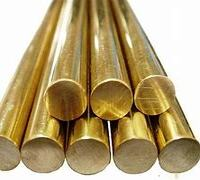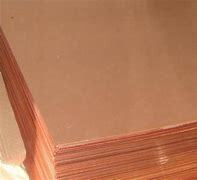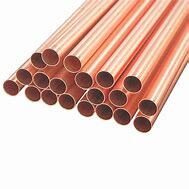1. Introduction
In the past 48 hours, global copper prices surged past $9,200 per metric ton due to supply chain constraints in Chile and increased demand from renewable energy infrastructure projects. This volatility underscores the importance of understanding the nuanced differences between copper-based conductive components—particularly copper rods—used across electrical grounding, welding, and industrial applications.

Copper rod is a foundational material in electrical, construction, and manufacturing sectors. However, not all copper rods serve the same purpose. From earthing rods to brazing and welding variants, each type is engineered for specific performance criteria. This article compares key categories to help professionals make informed decisions.
2. Copper Rods for Earthing: Bonded vs. Solid
Earthing rod copper systems are critical for safety in electrical installations. Two primary types dominate the market: solid copper rods and copper bonded alternatives.
Solid copper earth rods offer superior corrosion resistance and conductivity but come at a high copper rod price. In contrast, copper bonded earthing rods—made from copper bonded steel—provide a cost-effective solution with adequate performance in moderate soil conditions.
- Copper bonded ground rod: steel core with electrolytic copper coating (typically 0.25mm thick)
- Copper clad steel earth rod: similar but uses metallurgical bonding for better adhesion
For high-corrosion environments, solid rod copper remains the gold standard. However, copper bonded options are increasingly popular due to their lower earthing rod price and sufficient longevity in urban or dry soils.
3. Brazing and Welding Rods: Copper-to-Copper Joining Solutions
When joining copper components, the choice between copper brazing rod and copper welding rod hinges on joint strength, temperature resistance, and application context.
Copper to copper brazing rods typically contain phosphorus or silver alloys, enabling capillary action without flux in many cases. These are ideal for HVAC and plumbing systems using aircon copper pipe.
Conversely, copper rod for welding—such as copper to copper welding rod—is used in high-stress electrical or mechanical joints. Welding rod copper variants often include deoxidizers like silicon or manganese to prevent porosity.

Key distinction: brazing occurs below copper’s melting point (~1,085°C), while welding melts the base metal. Thus, copper rod welding is less common and usually reserved for specialized industrial repairs.
4. Copper Strips vs. Rods: Form, Function, and Fabrication
While copper rod is cylindrical, copper strip (or copperstrip) offers flat, flexible conductivity—ideal for busbars, grounding straps, and electromagnetic shielding.
Flat copper strip comes in various thicknesses, including 1mm copper strip and copper earth strip 25x3mm, the latter commonly used in substation earthing. Beryllium copper strip and nickel plated copper strip enhance strength or corrosion resistance for aerospace or electronics.
Recycling professionals often seek the best way to strip copper wire to recover copper strip or clean conductors. Burning copper wire for scrap is discouraged due to toxic fumes; mechanical stripping or the fast way to strip copper wire using automated machines is preferred.
Copper strip price varies by alloy and temper, with copper strip near me availability influencing project timelines. Roll of copper strip formats support high-volume manufacturing, while copper edging strip serves architectural detailing.
5. Copper Round Bars and Bus Bars: Structural Conductors
Copper round bar (or round bar copper) is distinct from rod in diameter and tolerance—typically used in machining, not electrical conduction. Flexible copper bus bar variants, however, are essential in power distribution due to their high current-carrying capacity.
Cu bars like copper flat bar or flexible copper bar are selected based on ampacity, space constraints, and thermal expansion. Copper ingot price fluctuations directly affect copper bars for sale, making inventory planning crucial.
Unlike copper rod, which is often drawn to precise diameters for welding or grounding, copper bar top surfaces may be machined for bolted connections in switchgear.

6. Copper Tubing in HVAC: Sizing, Soldering, and Cost
Though not a rod, copper pipe tube is frequently confused with solid conductors. Air conditioning copper pipe—such as 15mm copper pipe or 22mm copper tube—is annealed for bending and joined via copper pipe soldering.
Correct copper pipe sizing (e.g., 3/4 copper pipe vs. 1/2 copper tubing) ensures efficient refrigerant flow in AC systems. Resoldering copper pipe joints requires thorough cleaning and proper flux application.
AC copper pipe price remains sensitive to LME trends, with aircon copper tube costs rising alongside global copper demand. PEX plumbing pipes are gaining ground in water lines, but copper lines remain dominant in refrigeration due to thermal stability.
7. Cost, Sustainability, and Selection Criteria
When evaluating copper rod price versus copper bonded alternatives, consider total lifecycle cost—not just upfront expense. Solid copper offers decades of service in grounding; copper clad steel may suffice for temporary installations.
For recyclers, stripping wire for recycling must balance efficiency and purity. The best way to strip copper cable preserves conductor integrity, maximizing scrap value without resorting to burning copper wire for scrap.
Ultimately, the choice among earthing rod copper, copper brazing rod, or flat copper strip depends on electrical requirements, environmental exposure, mechanical stress, and budget.
8. Conclusion
From copper bonded ground rods to beryllium copper strip and copper rod welding consumables, the diversity within copper-based conductors demands careful specification. Understanding material properties, application contexts, and market dynamics ensures optimal performance, safety, and cost-efficiency across industries.
Our Website founded on October 17, 2012, is a high-tech enterprise committed to the research and development, production, processing, sales and technical services of ceramic relative materials such as 7. Our products includes but not limited to Boron Carbide Ceramic Products, Boron Nitride Ceramic Products, Silicon Carbide Ceramic Products, Silicon Nitride Ceramic Products, Zirconium Dioxide Ceramic Products, etc. If you are interested, please feel free to contact us.

